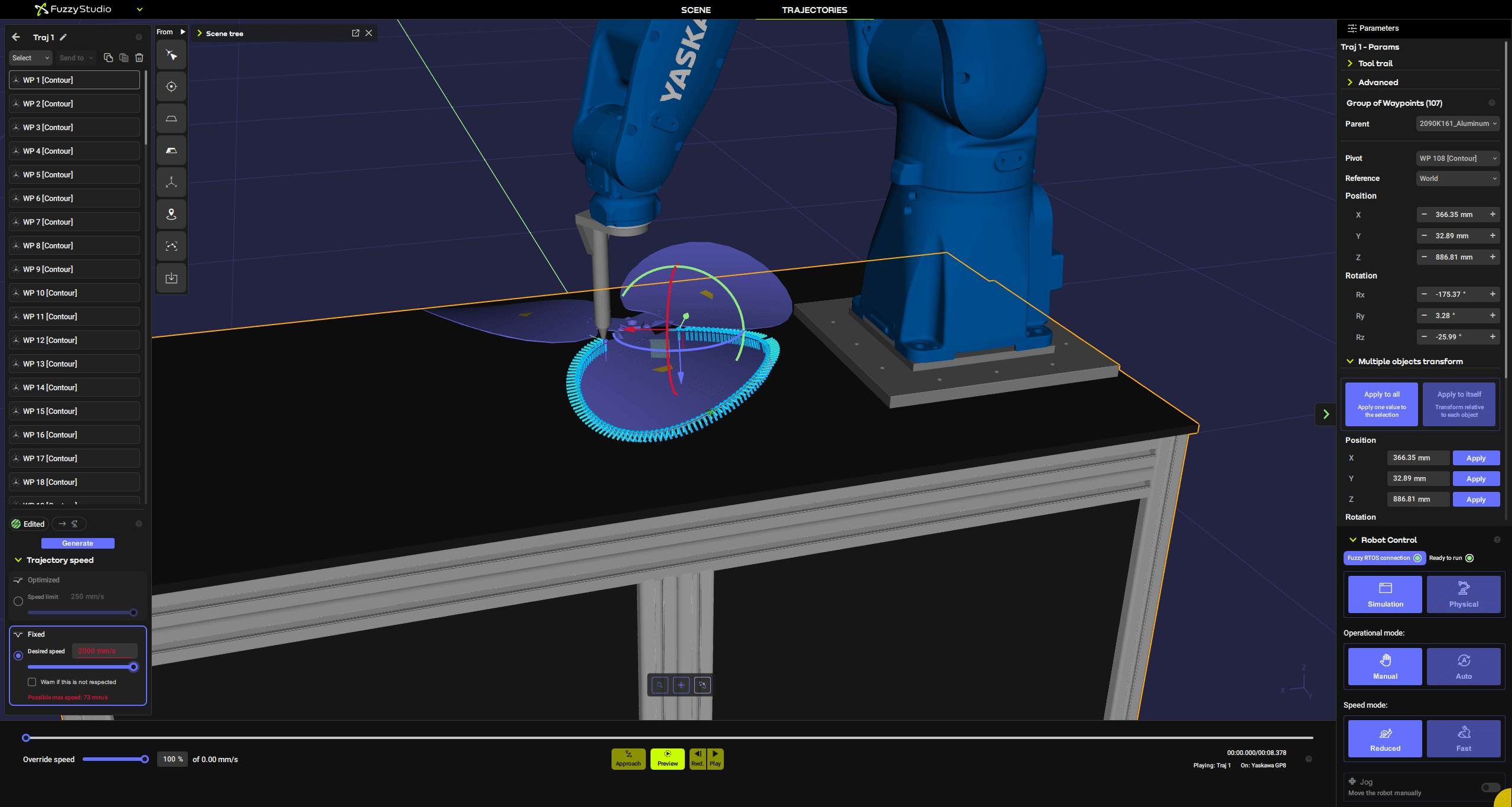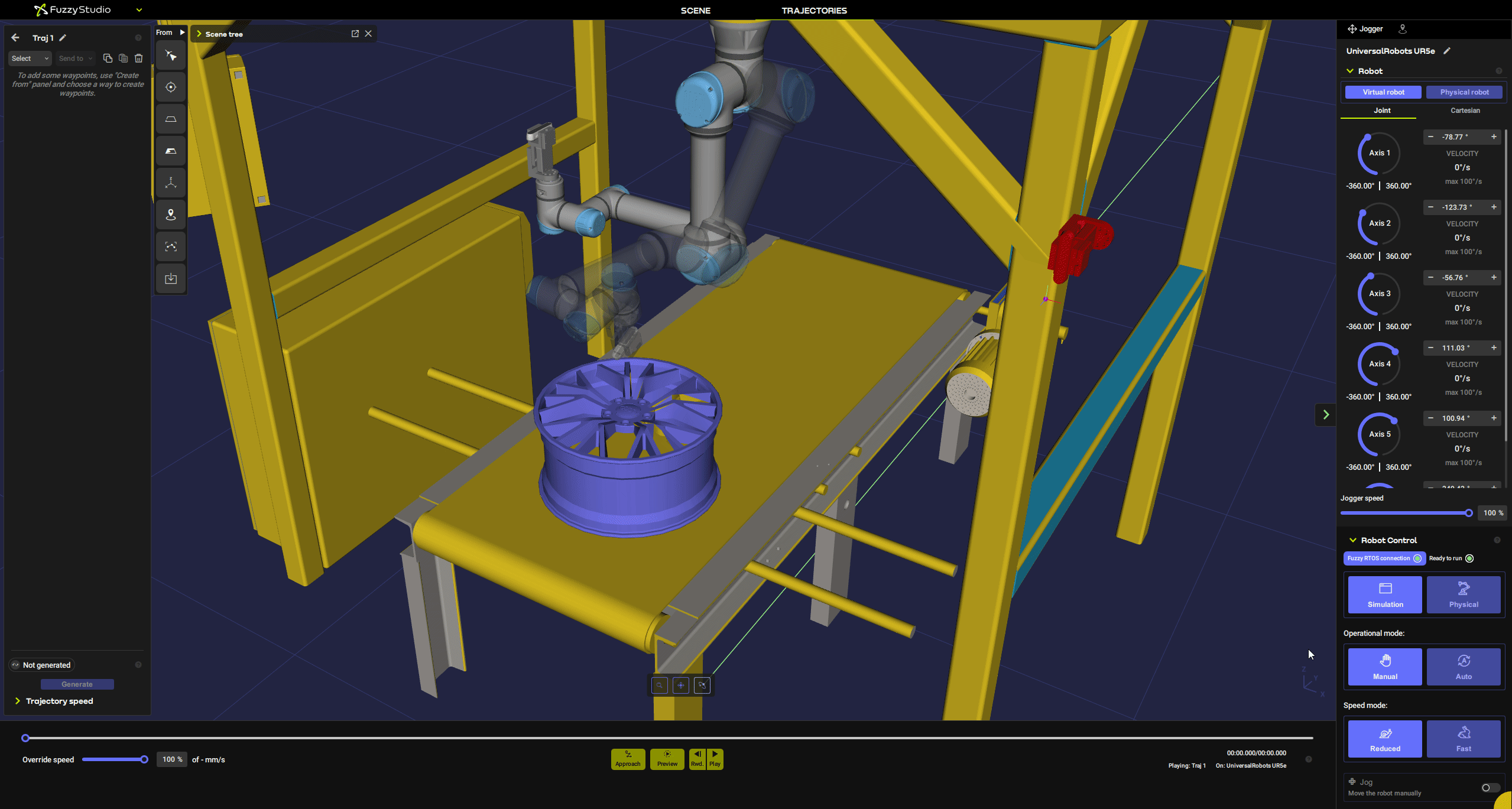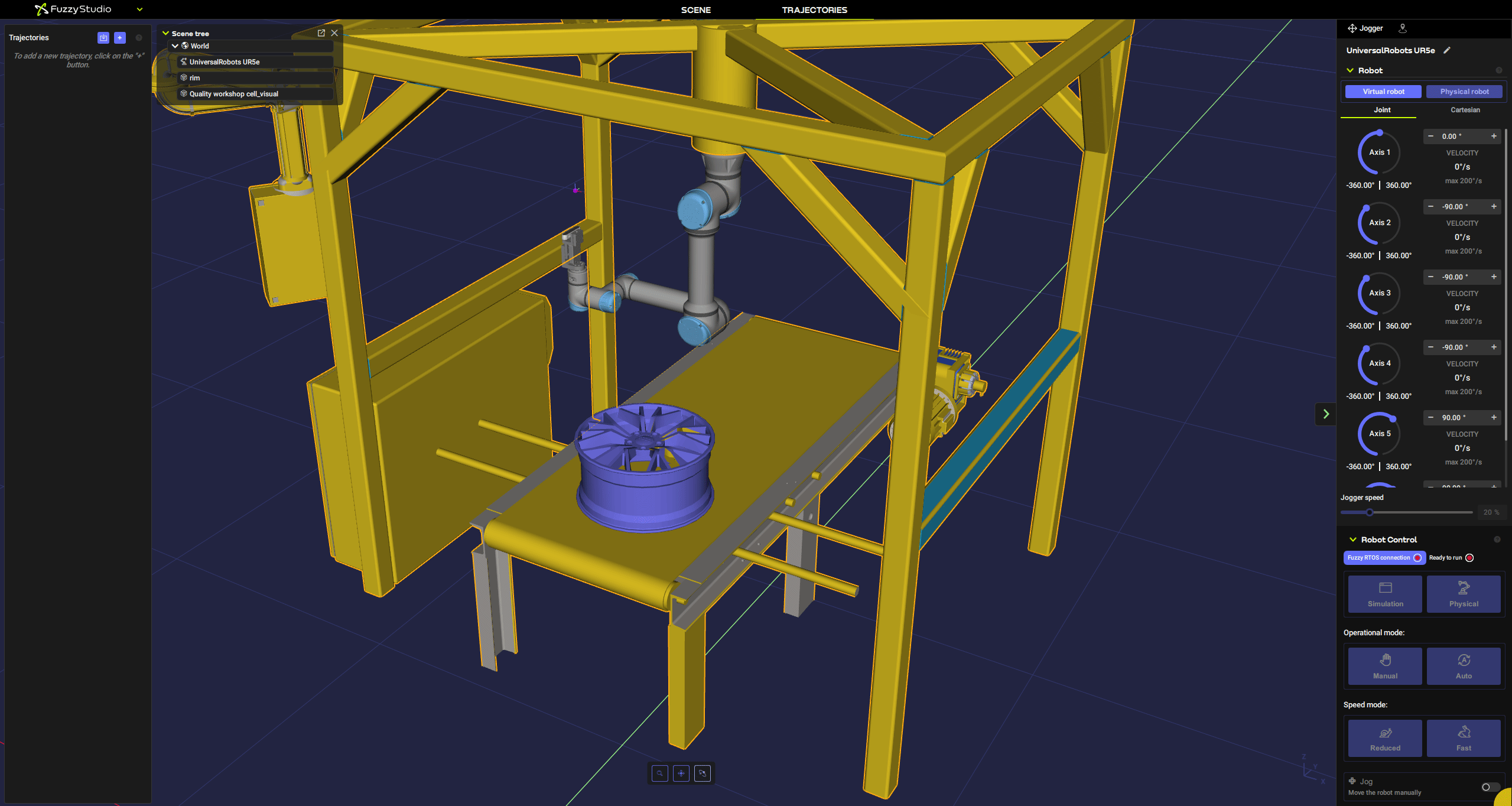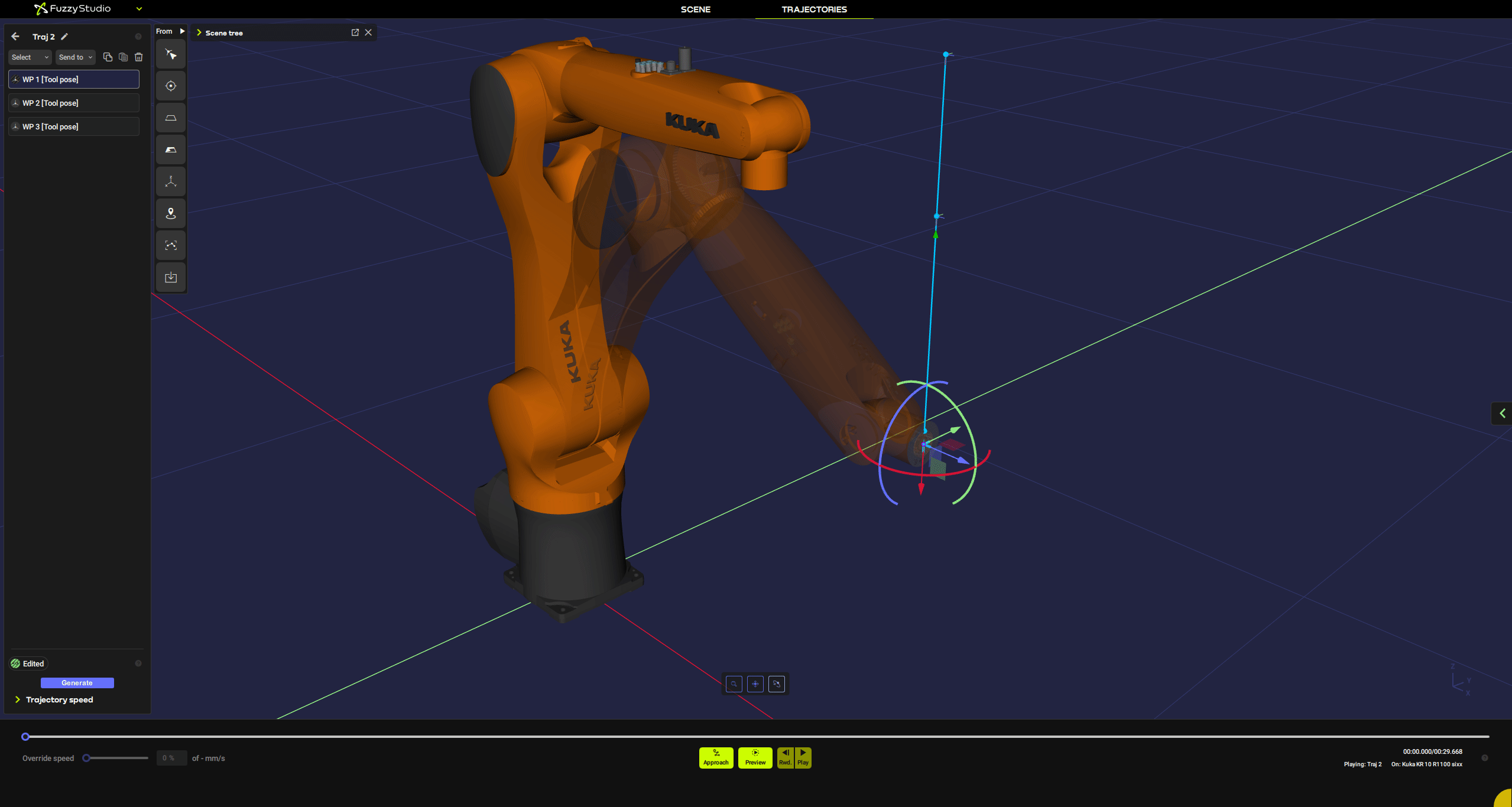Hello Fuzzers, and welcome to another Fuzzy Logic changelog. I know it feels like I’m saying this with every new release, but I promise you that this new release will definitely convince you that Fuzzy is more serious than ever in asserting that industrial robotics has never been more accessible to industries wishing to speed up their production. On the menu of this 4.9 release is the long-awaited arrival of Fast mode, enabling all your projects to reach real industrial speeds. And a host of other features to make your Fuzzy experience even more enjoyable. Let’s get started!
Introducing Operational Mode and Speed Mode
No need to drag out the suspense any longer. As you can see, version 4.9 of Fuzzy Studio marks the arrival of the long-awaited Fast mode. To give you an idea of the performance of this new mode, we’ve unbridled the previous speed limits, Cartesian and joint, to reach the robotic standards deployed. We’ve gone from 250mm/s in Cartesian to 2000mm/s. Joint speed has also been increased from 100°/s to 200°/s. This means that we have created another mode, Reduced speed, corresponding to the maximum speeds achievable on versions prior to 4.9. Quite simply, your complex trajectories will never have been so fast, and you’ll never have had the impression of touching your robot’s limits. To activate this new Fast mode, a connection to Fuzzy RTOS will be required, as well as the parallel adjustment of certain parameters such as the maximum speed reachable in the generation of your trajectory. Safety first – you don’t want to get into a fight with your robot.

Introducing CAD Work Pieces and Visual Pieces
A new feature in version 4.9 is the ability to assign categories to CAD files you import into your project. Each imported CAD file can now be used as either a Visual Piece or a Work Piece. Work Pieces take over all the features of CAD files previously used in Fuzzy, notably the waypoint generation aspect, with Surface, Contour and Cursor Pose generators. Visual Pieces have a very… visual purpose! They are mainly the components that make up your robotic cell, and on which only collisions will be available. Surfaces and contours will not be extracted for this type of part. The aim of this feature is to considerably reduce the loading time and weight of your projects. For your information, CADs imported from your previous versions will be considered as workpieces. You will of course be able to change the attribute of your CAD, and view it by hovering over the object in your scene.

Lock objects in the 3D scene
In your scene design, and more specifically in the scene tree, a locker has been added, allowing you to lock the position of an object. No need to worry about mishandling your design, objects remain locked and the transform editor is fully disabled for them.

New improvements of lateral offset for contouring
One of the most popular trajectory generators among our users is Contouring. Regularly updated to be even more efficient, a new algorithm has been implemented to manage lateral offsets more effectively. All overlaps are thus eliminated and smoothing improved, to maintain the best possible contour tracking. Particularly useful for applications such as deburring, and offering a relevant alternative to multiple TCP management.
Early exits with new singularity detection algorithm
New interactions with users are regularly proposed. The latest is the dreaded singularities! A new algorithm detects potential singularities on your trajectories. You’ll be warned of any such situation, and we’ll suggest a potential solution to resolve the problem, mostly by moving the troublemaking waypoints. It will still be possible to generate the trajectory with longer generation time and execution, but you’ve been warned!

Fuzzy RTOS now reloads previous configuration at start
And finally, when you reboot Fuzzy RTOS, the current configuration is retained and reloaded the next time you boot. Rather useful if a reboot is necessary in your installation.
